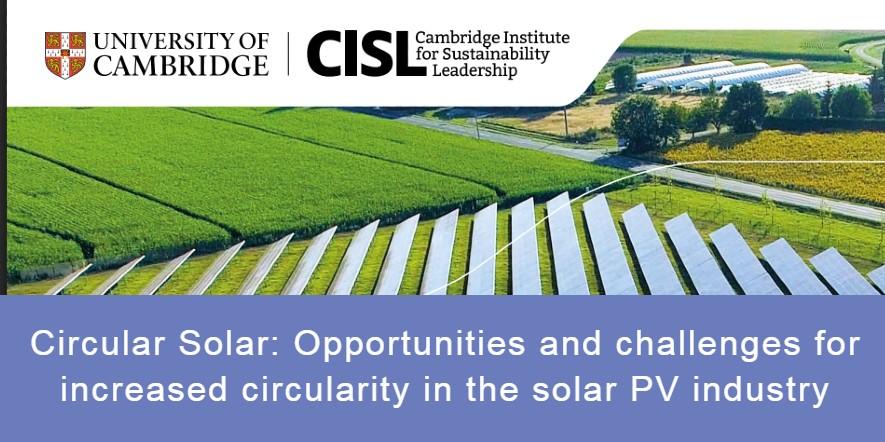
New report from CISL, E.ON Group Innovation and IfM Engage explores the challenges and circular solutions associated with the expected increase in end-of-life solar PV waste over the coming years, highlighting the need to avoid causing an environmental crisis by addressing the climate crisis.
Download the Circular Solar report
Download Annex 1
Download Annex 2
This report looks at the challenges, opportunities and pathways to an improved circular economy for solar photovoltaic (PV) panels in the EU. For this analysis, a circular economy is defined as a system that preserves the value of materials and minimises waste through reuse, repair, remanufacturing, and recycling.
Solar PV is one of the most widely deployed and cost-effective technologies for renewable electricity generation, featuring heavily in net zero strategies and pathways for the energy sector transformation. In the past two decades, the adoption of solar PVs has been driven up by a virtuous cycle of improved efficiency and declining costs, with 2024 seeing the largest increase yet.
Transitioning to a more circular solar PV value chain can deliver environmental, economic and social benefits. Strategies such as extending the lifespan of solar PVs through repair and remanufacturing, and maximising material recovery through recycling, can reduce resource consumption, pollution, and emissions – especially when powered by sustainable energy. It can also reduce resource consumption and import dependency. Despite growing interest, circular economy strategies for solar PVs have yet to achieve economies of scale, with many promising new operations existing in the margins of the industry.
Investing now in the development and scaling up of circular technologies and strategies presents an important economic opportunity for the EU. As the number of damaged and decommissioned solar PVs grows, so do the business opportunities for repair, refurbishing and recycling operators.
Policy and governance are crucial drivers of the business transition to a circular economy. While the EU has strong circular economy ambitions supported by regulations, implementation remains inconsistent. Measuring progress is also difficult in the absence of detailed and comprehensive data on the location, age and status of solar PVs deployed in the EU.
This report emphasises the need for collaboration between businesses and policymakers to foster demand and incentivise innovation. Establishing effective second-life and end-of-life strategies, advancing technology readiness and leveraging policy support will be essential in creating a robust circular economy framework that sustains the growth and sustainability of the solar PV sector.
Read the full Cambridge Institute for Sustainable Leadership article

